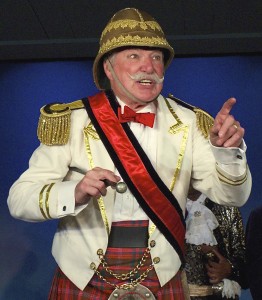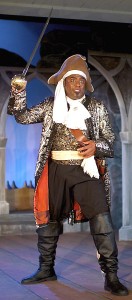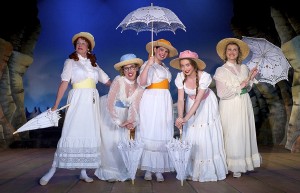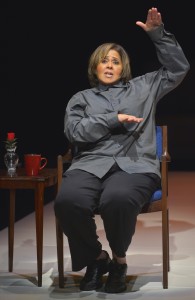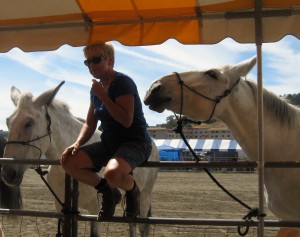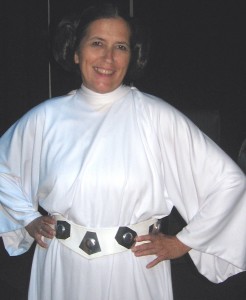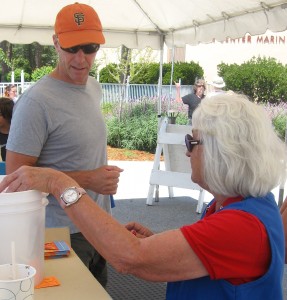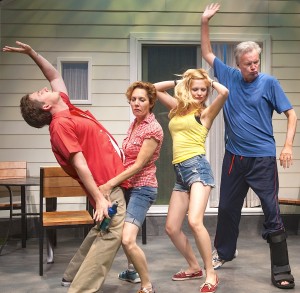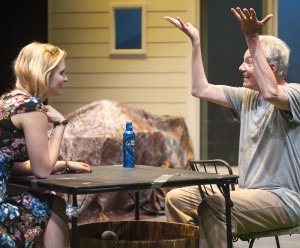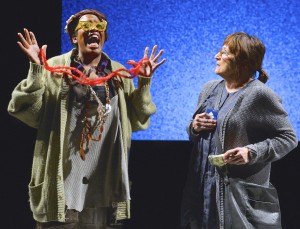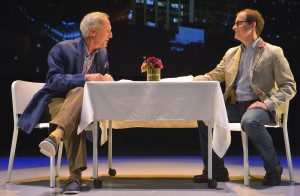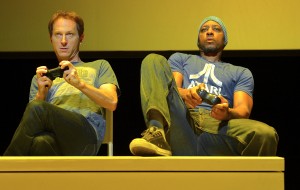I’d planned to see Diana Krall last winter, but she got pneumonia and canceled.
I didn’t take it personally. But I was disappointed.
A few nights ago, I went to the Wells Fargo Center for the Arts in Santa Rosa to see the 50-year-old Canadian.
I was anything but disappointed.
She was fantabulous — both her vocals and piano artistry.
I can’t remember her contralto voice being quite so hoarse or husky before, but I do recall a similar inability to sit still throughout her concert.
My legs shook and my toes tapped — at the same breakneck pace as her foot keeping time.
I also can’t recall her being so self-deprecatingly funny.
Including an oops, immediately followed by the admission, “I hit the wrong key.”
Although some critics of her current “Wallflower” national tour have trashed her 12th album as filled with schmaltzy, sultry covers of pop tunes dating to the ‘60s, I regarded her live selections from that same-titled album only a fleeting distraction from her life’s blood — rollicking jazz.
To ensure that genre remaining predominant, Krall employed five dazzling sidemen.
Most notable was fiddler Stuart Duncan, who bowed, plucked and strummed his way into my heart and ears despite his instrument being a jazz rarity. Though each virtuoso may have deserved equal time, Duncan resembled George Orwell’s pig in “Animal Farm” — more equal than the others.
Together, Krall and crew romped through two unbroken hours of songs, coaxing a good third of them into the showstopper category.
With the best of the best being Tom Waits’ “Temptation,” which spotlighted each guy in electrifying — and sometimes electrified — solo riffs.
Krall, who switched periodically from piano to synthesizer to create a countrified twang or clipped rock ‘n’ roll beat, dipped heavily into standards, a mainstay of her previous concerts — in this case such classics as “Exactly Like You,” “Deed I Do” and “On the Sunny Side of the Street.”
She also invoked the ghosts of Oscar Peterson, playing a few lightning-fast bars from an arrangement of his before claiming she hadn’t learned more, and Nat King Cole, paying homage to that singer-pianist via “You Call It Madness But I Call It Love.”
Only for an instant did she border on boring me — with two straight extracts from the “Wallflower” album.
Instead of sticking with historic conventions, she’d undoubtedly have done better using The Mamas and The Papas’ “California Dreamin’” and The Eagles’ “Desperado” as springboards to jazz inventions like those that thrust her into celebrity.
During the show, a large screen at stage rear projected static wallflowers, blossoming flora and a stylized shot of her twin boys.
I found those accents superfluous to the musical marvels onstage.
Ditto the lights that occasionally blinked from the amps.
I enjoyed, however, Krall’s drawing laughs by inserting strains of “Moon River” into a tune she admitted was “not usually known as a funny song,” and smiles from a confession that “my left hand and my right hand aren’t talking to each other very well.”
I also loved the frequent, idiosyncratic flipping of her long dirty-blonde locks from her face.
And I smiled admiringly when she took her bows alongside her backups — Duncan; guitarist Anthony Wilson; bassist Dennis Crouch; drummer Karriem Riggins; and keyboardist Patrick Warren — rather than alone.
As I look back, I think this Sonoma County performance outranks my previous favorite, a freebie Stern Grove outing in San Francisco where not even the heat or mosquitos could quash my Krall pleasure.
This time, she, who’s been married since 2003 to chartbusting pop-rock singer Elvis Costello and who’s sold more than 15 million albums worldwide, ended a 20-minute encore with “Ophelia,” which again brought the sold-out Person Theater crowd of more than 1,600 to its feet as a single unit.
That segment also had included a swingin’ version of “The Frim Fram Sauce,” which had been popularized by Cole, and a snoozer, Bob Dylan’s “Wallflower.”
Some fault-finders are hell bent on chastising Krall for “selling out” by concocting a heavily stringed, non-jazzy pop album.
Almost as stubbornly as denigrators bombarded Dylan when he switched to electric guitar.
Count me not among them — in either case.
Upcoming star turns at the Person Theater of the Wells Fargo Center, 50 Mark West Springs Road, Santa Rosa, will include comedian Lewis Black’s “The Rant Is Due: Part Deux” on Sept. 11, vocalist Frank Sinatra Jr.’s “Sinatra Sings Sinatra” on Oct. 8, and Rosanne Cash with John Leventhal on Oct. 16. Information: www.wellsfargocenterarts.org or 1-707-546-3600.
Contact Woody Weingarten at voodee@sbcglobal.net or www.vitalitypress.com/



